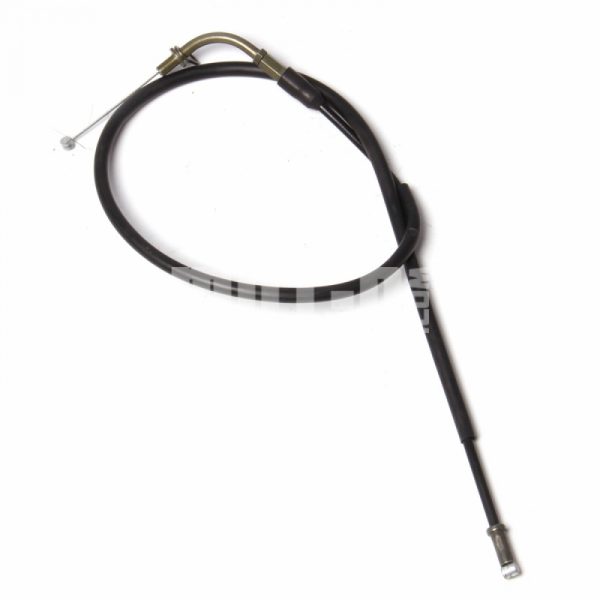
New world in motion
Content
A pendulum that won't move the same way twice. A capricious suitcase that makes our wrist behave in a certain way. A metal ball that acts like a rubber ball. The Copernicus Science Center invites you to a New World on the move.
The Power of Independent Experience
The permanent exhibition consists of eighty interactive exhibits that delight with precision and allow free experimentation. They are ambitious and informative, as well as accessible and engaging. Some of them were created in the workshop of Copernicus. Others were brought in from the best designers in the world. Still others have undergone a process of renewal and improvement.
The presence of multimedia, which defines our daily life and relegates real experiences to the background, is reduced to a minimum. The New World in Motion is a space where everyone can discover and experience the laws that govern the world.
The exhibits at the exhibition are grouped into thematic zones, which allows you to look at similar phenomena from different angles and find their common features in different contexts. This helps to better understand the essence of the issue. Our minds learn through repetition, so the number of topics covered in the exhibition is limited. Each phenomenon can be studied in different ways. The Magnetic Cloud, Spiny Fluids, and Magnetic Bridge are exhibits depicting magnetic field lines. The magnetic cloud allows for visual observation and inspires questions. Bristling liquids allow not only to observe, but also to form the field space. A magnetic bridge, on the other hand, makes it possible to physically feel the magnetic field lines. By experimenting with all these exhibits, you can easily connect the threads and understand the phenomenon in a comprehensive way, which is so difficult to achieve by absorbing definitions from textbooks. Such a grouping of exhibits will be gradually introduced in the space of all Copernicus exhibitions. The power of independent experience The Copernicus Science Center's new permanent exhibition consists of eighty interactive exhibits that delight with precision and allow free experimentation. They are ambitious and informative, as well as accessible and engaging. Some of them were created in the workshop of Copernicus. Others were brought in from the best designers in the world. Still others have undergone a process of renewal and improvement. The presence of multimedia, which defines our daily life and relegates real experiences to the background, is reduced to a minimum. The New World in Motion is a space where everyone can discover and experience the laws that govern the world. The exhibits at the exhibition are grouped into thematic zones, which allows you to look at similar phenomena from different angles and find their common features in different contexts. Thereby
Nowy Świat v Rukh has seven thematic zones:
• Electricity and magnetism
• Waves and vibrations
• Gyroscopes and moment of inertia
• Liquids (liquids and gases)
• Simple machines
• Space
• Chaotic phenomena
Selected exhibits
magnetic bridge From a magnet and a huge number of metal discs, many amazing shapes can be cut. Next to a magnet, the discs act as if they are mini-magnets themselves—they are attracted to each other, creating filaments and larger groups.
bouncing ball A small ball (the size of a pea) falls from a height of about 30 cm onto a slightly concave steel surface and bounces off it hundreds of times. The hypnotic bouncing of the ball is phenomenal and mesmerizing.
Chaotic pendulum This pendulum, set in motion, will never behave the same way twice. At first glance, it looks quite simple - a few steel arms, forming the shape of the letter T. However, it is very sensitive and completely unpredictable.
Rotary table Next to the rotating metal table are billiard balls, hoops, pucks and rings of various sizes and thicknesses. All these accessories roll well on the surface. How do they behave when the substrate rotates? This is what needs to be checked.
air gun Here is a new version of one of the favorite exhibits of the former gallery "Holy in the Brook". After hitting the membrane, an air vortex is formed in the form of a torus (a circle resembling an inflated inner tube). The improved exhibit is easier to handle, and the shot is much more effective.
Modern, friendly space
Copernicus has a lot of glazed space. As a result, it is very bright here in spring and summer, and the lighting changes throughout the day. Meanwhile, some exhibits need light control. That is why a special pavilion was built for them. It includes, among other things, a fog chamber and a spark chamber. The large blue pavilion is also a good reference point for visitors to the exhibition. In the future, such places will appear in other parts of Copernicus. Thanks to this, it will be possible to use exhibits that were not previously in the Center.
The new exhibition is visually different from the rest of Copernicus. All exhibits of the "New World in Motion" have a unified body in a neutral color. The consistent use of plywood and metal visually calms the entire space and promotes concentration. Previously, the exhibition was very colorful and provided a lot of stimuli that made it difficult for visitors to focus on one particular experiment. As a result, they failed to achieve the most important goal of their visit to Copernicus - to get acquainted with the phenomenon contained in the exhibit.
New to the exhibition space are also comfortable seating areas where you can relax, socialize and recharge for further exploration.
This is just the beginning.
Nowy Świat w Ruchu is the first permanent exhibition that has changed over the five years of Copernicus' activity. This change reflects the directions in which the Center is intensively developing - the creation of exhibits, the design of interactions and the involvement of visitors in this process. Exhibitions are at the heart of the existence of the Copernicus Science Centre. A team of the best specialists is working on the creation of the exhibition. They spend months thinking, building, prototyping, testing and improving exhibits. They make sure that the phenomena are real and as accurate as possible - requiring discovery and opening the field for their own experiments and conclusions. The result of this work should be safe, easy to use, maintainable, aesthetic, have a clear description. Several dozen people are involved in the construction of one exhibit. Already during the work, the exhibits are provided for review by visitors. This allows you to watch people use them, talk about it, customize it, and ultimately create something unique.
Ultimately, the entire first floor of the Copernicus Science Center will turn into one large experimental space. Subsequent changes will also affect the first floor of the building - galleries Re:generation and Bzzz!.

